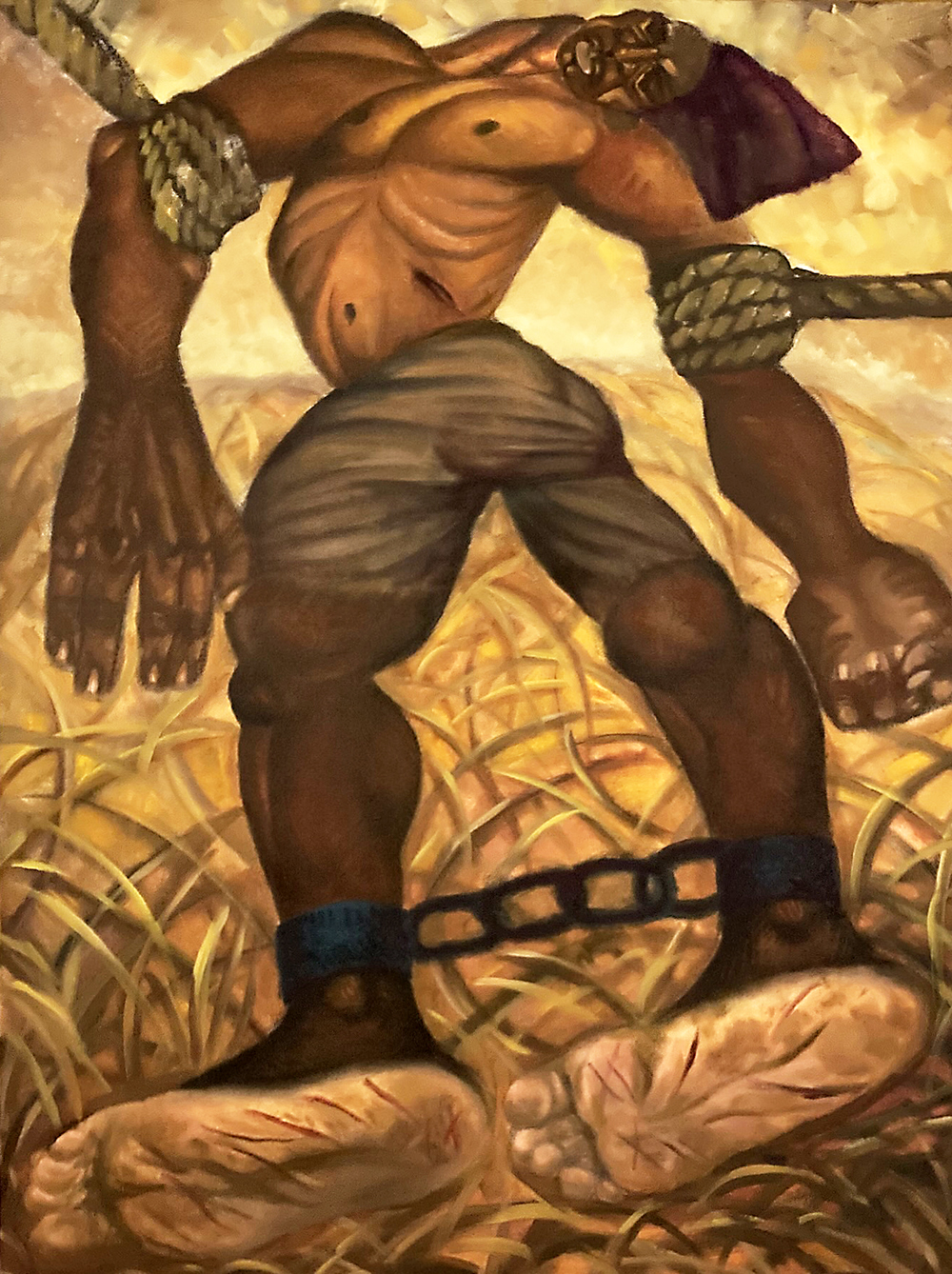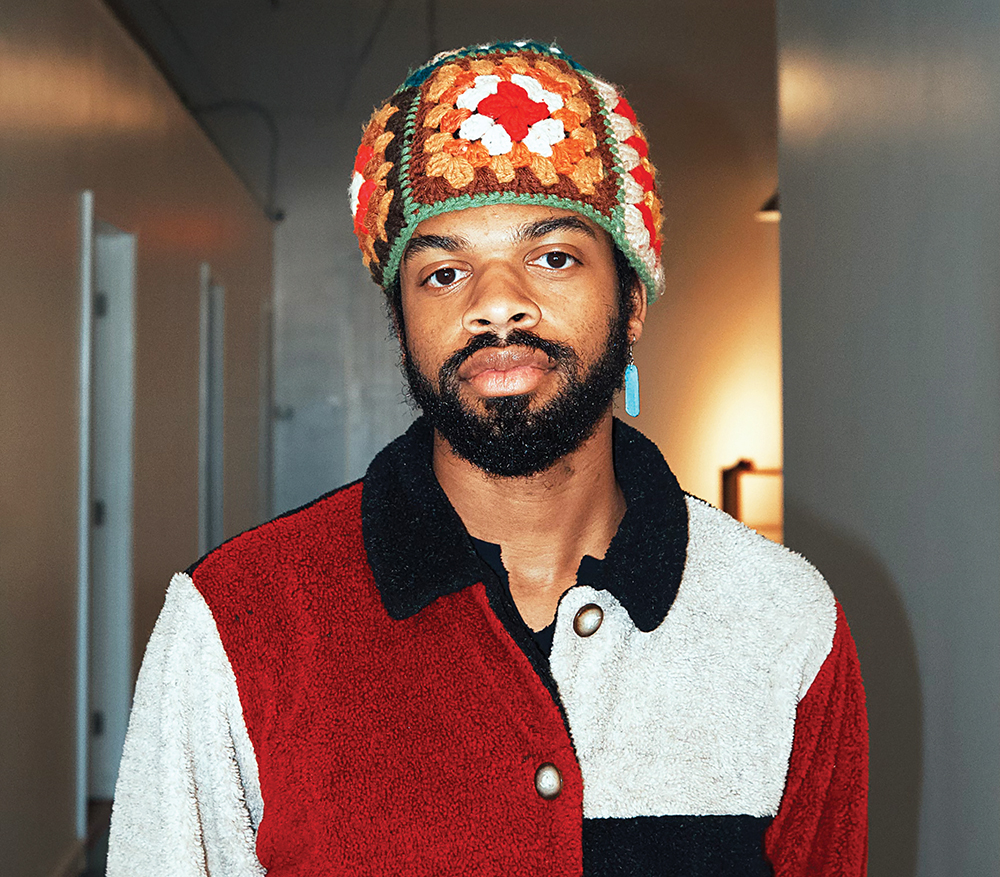When Pontius Pilate presented Jesus to the riotous crowd before his crucifixion, he uttered the phrase, “Ecce homo,” Latin for “Behold the man.” “He’s all battered and bruised,” artist Rahn Marion says of the Biblical scene. “It’s kind of a gross phrase.” Yet this phrase is the title of Marion’s latest show at TONE.
To many, religion in the Christian context is laced with guilt and shame, especially for those whom the mainstream Christian, Eurocentric rhetoric disenfranchises. The “gross” parts of religion. But Marion, in his show, is reclaiming those parts. “It’s a celebration of man and all these stories of where we’ve come from and where we’re going,” says Marion, the art director at the First Congregational Church. “A lot of these things that I’m interested in [are] Eurocentric, and I think it’s interesting to put it in a Black queer experience. And I feel like a lot of the martyrs and stuff like that is so blatant that it can be translated into the Black experience or a person of color.”

Marion began the 12 paintings of the show in the depths of lockdown and the social and political unrest that followed, when sacrifice and martyrdom were at the forefront. “Every time people really get together and create change, there’s always a sacrifice that happens and that really gets people’s attention, and these people don’t want to be martyrs,” he says. At times like these, people look to religion for comfort or to confront. With this in mind, incorporating and reinterpreting religious iconography and themes was a natural step for Marion, and considering that he has lived in and worked with First Congo since he graduated college and even began his relationship with art by drawing on bulletins during sermons at Boulevard Disciples of Christ, Marion is well-equipped to take on such a challenge.
One of Marion’s paintings reflects on the martyrdom of St. Sebastian. “He’s seen more as a queer icon,” Marion explains, because religious images often depict the saint in the nude. “It was like a way people could see a nude male body and not be freaked out by it.”
Marion does not shy away from nudity in this show as he infuses homoeroticism with religious imagery and themes, but given his religious background, he admits, “It took me a while to feel comfortable painting nude men.” Eventually, Marion confided to his pastor at First Congo about his worries, and she pointed out the prevalence of nudity in Greek and Roman sculpture and throughout art history. “I think it was mostly that I’ve never seen Black men in that way, in the way of Greek sculptures and stuff.”
Though Marion uses oils as his preferred medium for their “delicious and tactile” qualities, the paintings themselves take on that powerful sculptural element. The artist constructs his paintings around symmetry, bringing his figures to the forefront with bodies formed by striking geometric shapes with deep shadows and intense highlights. “I wanted to blend muted tones of the medieval kind of look with more contemporary bold colors,” Marion says, “so there’s a nice play between those two things that kind of puts you in an in-between of historical eras.” By playing with these different artistic eras, Marion captures the timelessness purported of Eurocentric narratives, all the while subverting it by centering the Black queer experience within his pieces.
“I’ve heard people call my work kind of outsider,” Marion says. “And I think that’s just because I stay true to what I like.”
“Ecce Homo” is on view at TONE through March 19th.
